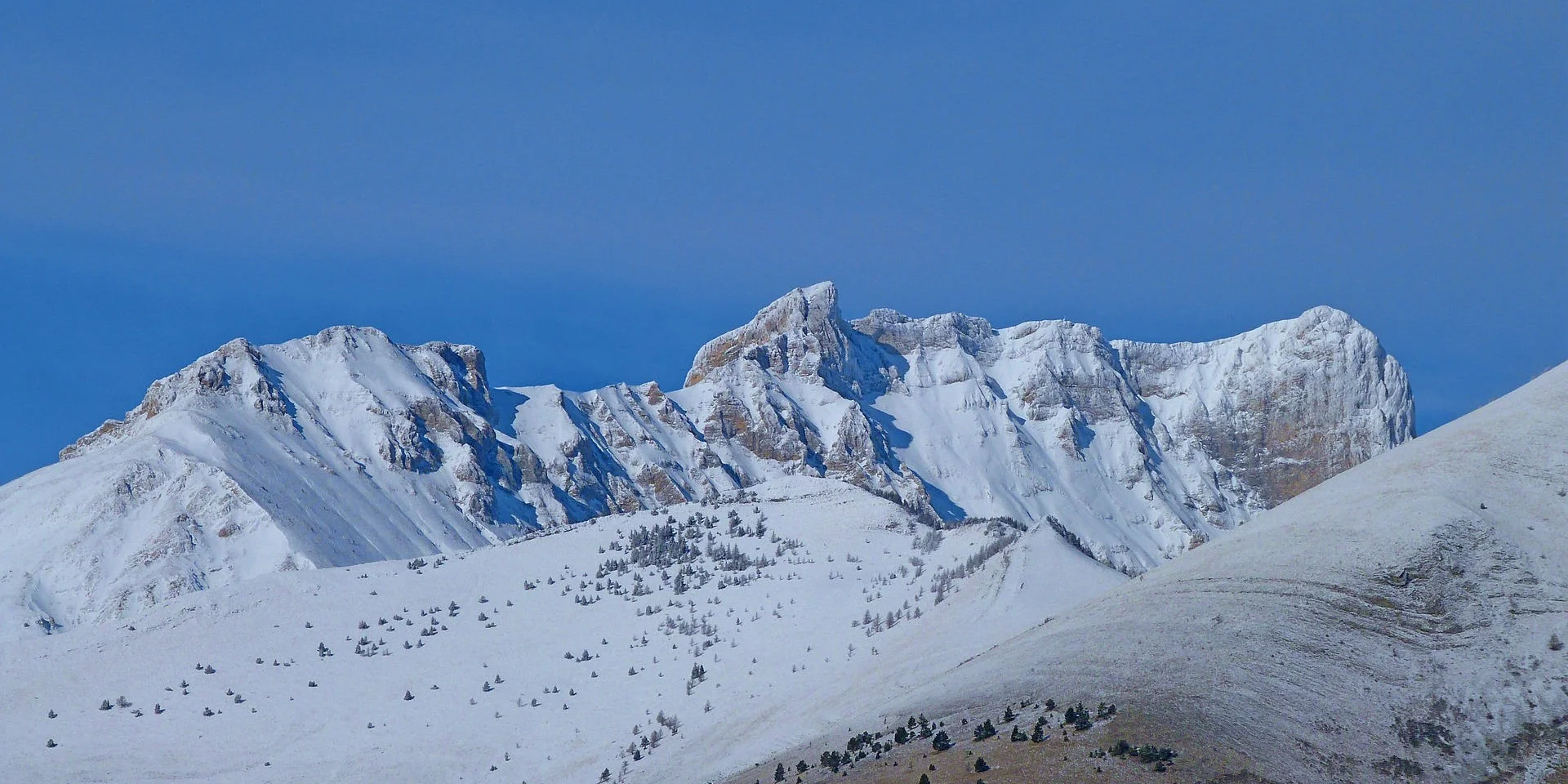Crisscrossed by several hiking trails reserved for seasoned walkers, it attracts lovers of wild nature and magnificent landscapes. At the summit, the presence of the astronomical observatory gives the place an unusual aspect. The Pic de Bure is a must-visit destination for mountain enthusiasts, combining adventure, natural beauty, and scientific discoveries in a preserved and majestic setting.
 Devoluy Montagnes
Devoluy MontagnesThe Pic de Bure
The third highest peak in the Dévoluy massifDiscovering Pic de Bure in summer
In summer, Pic de Bure, reaching an altitude of 2,709 metres, becomes a favourite playground for hiking enthusiasts. Located in the Dévoluy massif, this peak offers a multitude of trails leading to its summit. Whether you are a beginner or an experienced hiker, you will find routes suited to your level. The breathtaking landscapes and the richness of the local wildlife and flora make each ascent a unique experience.
For the more adventurous, Pic de Bure is also accessible by mountain bike. The well-marked trails allow you to fully enjoy the thrills while admiring stunning panoramas. The technical descents and smoother sections offer a challenge that meets the expectations of the most demanding cyclists.
La combe Ratin is undoubtedly the “easiest” route to access Pic de Bure. You can also reach the summit via la combe de Mai and la combe d’Aurouze. All routes, however, are more or less complex and require good physical condition and mountain walking experience.
Pic de Bure in winter
In winter, the Pic de Bure, reaching an altitude of 2709 metres, transforms into a true paradise for winter sports enthusiasts. Located in the Dévoluy massif, this peak is accessible by snowshoes or ski touring, offering unique experiences and breathtaking snowy panoramas. However, this ascent requires adequate equipment and good preparation.
For beginners or those unfamiliar with winter mountain conditions, it is strongly recommended to contact the guide office or a specialised provider. These professionals will not only provide the necessary equipment but also the advice and guidance essential for a safe ascent.
The ascent of Pic de Bure in winter is a demanding yet rewarding adventure. The winter landscapes of the Dévoluy, with their vast stretches of pristine snow and rugged ridges, offer spectacular views of the Écrins National Park that will reward every effort. Whether you choose snowshoes or ski touring, each step brings you closer to the magic of winter in the high mountains.
Climbing the Pic de Bure in winter is an unforgettable experience for mountain enthusiasts. With proper preparation and professional guidance, this winter adventure promises lasting memories and a complete immersion in the wild beauty of the Dévoluy.”
The Dévoluy massif
To the northwest of Gap, the Dévoluy massif enjoys an ideal location near the Écrins National Park, the Champsaur, and the Valgaudemar valleys. The highest peaks of the Dévoluy almost reach 3000 metres in altitude: l’Obiou rises to 2,789 metres. The resorts of SuperDévoluy – la Joue du Loup benefit from excellent snow conditions and delight mountain sports enthusiasts in winter. In summer, the massif becomes a playground for hiking and mountain biking lovers. Pic de Bure, the third highest peak in the massif, is located in the south of the Dévoluy in the commune of Montmaur.
The astronomical observatory of pic de bure
Located at an altitude of 2550 metres in the Dévoluy massif, the interferometer observatory on the plateau of Bure, known as Noema, is an exceptional site for astronomical observation. This location was chosen for the extraordinary purity of its sky, far from pollution and city lights, offering ideal conditions for exploring the universe.
Noema is one of the most powerful astronomical observatories in the world. Thanks to its sophisticated antennas, it allows astronomers to listen to the stars and study the mysteries of the universe with unmatched precision. This site is particularly valued for astrophysics research, as it offers an unobstructed view of the cosmos, essential for high-quality observations.
The interferometer observatory on the plateau of Bure is a true gem for the scientific community. Researchers from around the world come here to conduct crucial studies on the formation of stars, galaxies, and planetary systems. This unique place contributes significantly to our understanding of the universe and the pursuit of astronomical discoveries.
In summary, the Noema observatory at Pic de Bure is a must-visit site for astronomy enthusiasts and scientists. With its cutting-edge equipment and prime location, it continues to push the boundaries of our knowledge of the universe, making the Dévoluy massif a world-renowned reference for astronomical observation.
Practical information
You are in a mountain environment. Certain precautions are necessary to enjoy this exceptional natural site in the best safety conditions.
- Weather: make sure to check the weather conditions before starting your hike or mountain activity;
- Equipment: equip yourself with suitable shoes, a backpack, and gear designed for mountain activities in summer or winter;
- Water and food: take enough water and energy bars.
In winter and spring, avalanche risks are real. You can contact the Dévoluy Guides Office for guidance from an experienced guide.













